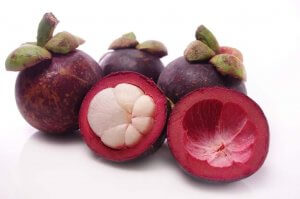
In addition to knowing how to buy, it is vital to know how to conserve the food we take home, to prevent them from breaking down, and that bacteria that are in them proliferate, endangering family health. For this we have to know some fundamental techniques for food preservation, such as: Refrigeration, freezing, salting, smoking and not least thawing in order to preserve the nutritional quality and the organoleptic characteristics of food as they are, the color, smell, texture and flavor of them, thus prolonging their “shelf life”.
Conservation by Refrigeration.
It is one of the cold food preservation techniques, which consists in placing the food in the refrigerator at a temperature of 3-5 degrees C (Celsius or Celsius), for a short period of time, before cooking them. or its subsequent freezing, thus delaying the proliferation of bacteria in these.
When cooling, it must be taken into account that:
- For the conservation of fresh food in the refrigerator, glass containers usually produce more moisture and tend to rot, so it is advisable to use plastic or Styrofoam containers, wrapped with plastic wrap or vinyl (many foods already come in these packages).
- The use of metal containers should be avoided, since they tend to reduce the “shelf life” of fresh food inside the refrigerator, because more moisture is produced.
- Processed foods are best preserved in glass containers, so as not to alter their taste.
- Foods processed with salt should not be stored in metal containers, because there are some metals that release toxic substances to the body in contact with salt.
- The refrigerator works best when it is not overly full, so you must calculate the amount of products to buy, so that there are spaces for the cold air to circulate evenly inside it.
Conservation by Freezing.
It is one of the most used and most effective methods for the conservation of cold foods. It consists of subjecting the food to temperatures of less than 0 degrees C (Centigrade or Celsius), which is the freezing temperature of water. Here by freezing cold, bacteria that break down food are inhibited in such a way that their “shelf life” is prolonged. For this method the freezers of the refrigerators are used, programmed at temperatures below 0, or if you prefer and there is enough space at home, you can obtain an additional freezer.
Some guidelines or tips to freeze:
- Refrigerator freezers work much better when they are full.
- All foods, both raw and processed, must be properly packed so that the cold does not burn them. Raw foods such as meat, fish and seafood can be packed in plastic bags or vinyl paper (film). The processed can be frozen in plastic containers with lid (never glass to avoid accidents, because the low temperatures can break).
- Before freezing the food that has been prepared, it should be left to cool, since the temperature of the freezer can go down and as a consequence, decompose the food already frozen. The refrigerator also consumes more energy by having to re-regulate the temperature it lost.
- Do not freeze food that has already been thawed, to avoid the proliferation of bacteria.
Defrosting
Thawing should be done inside the refrigerator, never at room temperature, to avoid the proliferation of bacteria. The food is taken out of the freezer and placed in the refrigerator the night before so that it thaws. If you forget, you can place the package in a container with drinking water at room temperature and leave it in the refrigerator to thaw. To defrost processed foods, you can use the microwave oven by pressing the defrost button. This is not so convenient for raw meats or fish as they can start their cooking unevenly and activate the microorganisms in them. When defrosting meats, fish or seafood, they should be consumed in their entirety. They should not be refrozen. In fact, no defrosted food has to be refrozen, because the bacteria have been activated and can turn into toxic foods, harmful to health.
Salting or drying.
It is known as salting or drying, the oldest conservation method used by man to preserve some foods, microorganisms (bacteria) that break them down. It consists of using salt in large quantities with the addition of nitrates, to sprinkle with this mixture, meats and fish, in order to slow down its decomposition. They are put to air currents, without the direct sunlight, to lose moisture, as it is an effective means for the proliferation of bacteria.
Smoked.
Smoking is a method of food preservation, which consists of using flaming aromatic woods, exposing food to the smoke of these, to preserve them, giving them flavor and aroma. According to the food, the wood of the tree that best suits itself is chosen. Any hard wood, free of resin (apple tree, oak) and other than pine, cypress, eucalyptus and any red wood is used.



